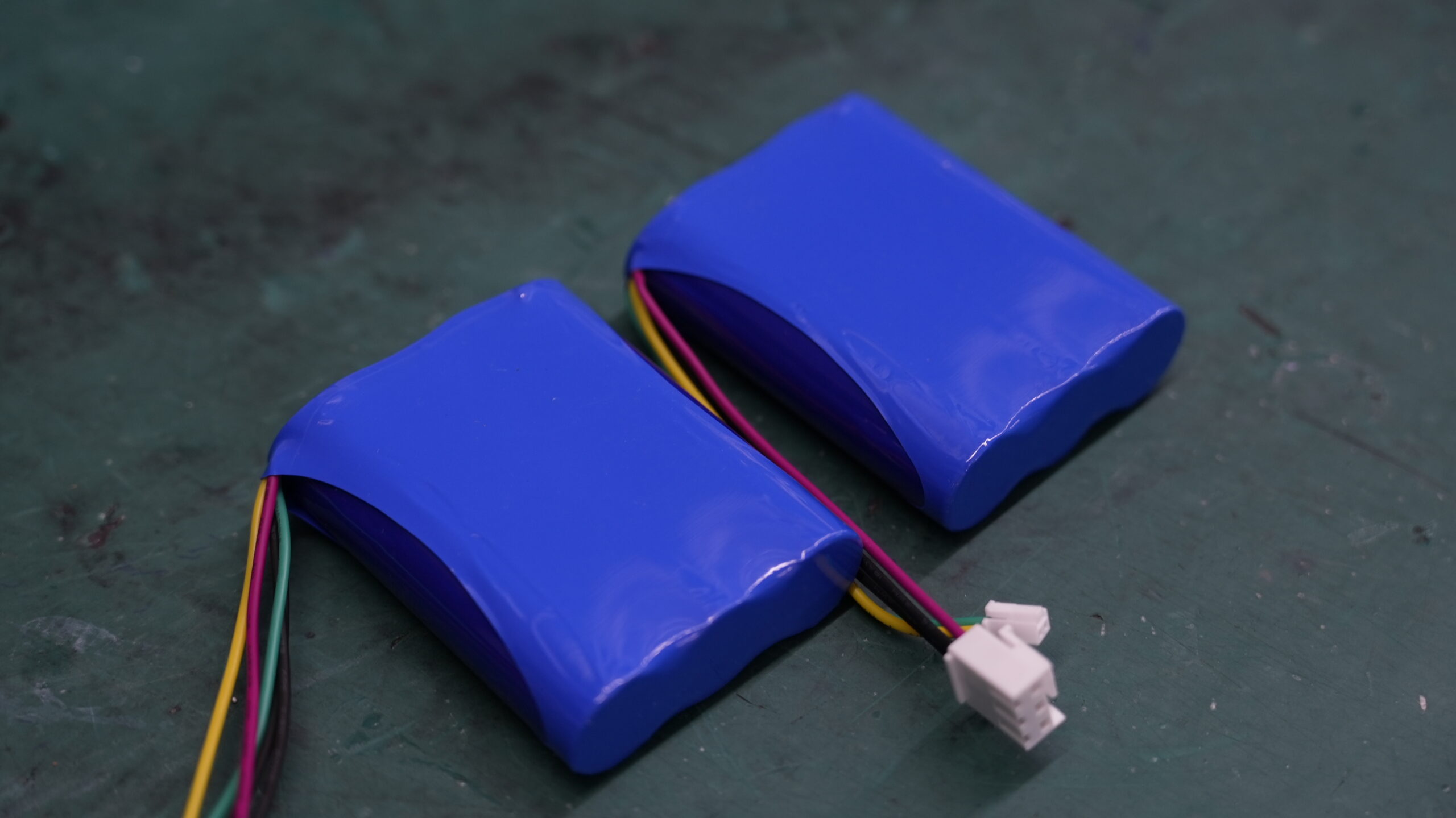
You need the right lithium battery for lamps to meet your project’s demands. LiFePO4 stands out with thousands of cycles and high thermal stability, while lithium-ion offers a lighter, more compact lithium battery for lamps. Always match battery capacity and voltage to each lamp. The right lithium battery for lamps ensures safety, longevity, and reliable performance. When you select a lithium battery for lamps, you gain better control over brightness and portability. For B2B projects, choosing the best lithium battery for lamps supports efficiency and safety.
Attribute
LiFePO4
Lithium-Ion
Li-Poly
Average Lifespan
Thousands of cycles
Shorter than LiFePO4
N/A
Safety
High thermal stability
Risk of fires/explosions
N/A
Portability
Heavier
Lighter and more compact
N/A
Key Takeaways
Choose the right lithium battery type for your lamp application. LiFePO4 offers safety and longevity, while lithium-ion provides compactness and high power output.
Always match battery capacity and voltage to your lamp’s requirements. This ensures optimal performance and extends the lifespan of your batteries.
Prioritize safety by selecting certified lithium batteries. Look for compliance with safety standards like UL 1973 to minimize risks in your lamp projects.
Part 1: Battery Performance
1.1 Lamp Application Overview
You encounter a wide range of lamp applications in B2B projects, including Medical, Robotics, Security System, Infrastructure, Consumer Electronics, and Industrial scenarios. Each application demands specific energy storage systems and lithium battery packs to deliver reliable lighting. Desk lamps often require compact lithium-ion batteries for portability and moderate brightness. Emergency lamps rely on robust energy storage systems with high-capacity li-ion cells to ensure long runtime and safety. Outdoor lamps, used in infrastructure and security system projects, need durable lithium battery packs with higher voltage and capacity for extended operation. Industrial and robotics lighting solutions benefit from advanced battery technologies that support frequent cycling and stable power output.
Tip: Always select lithium battery packs that match the lamp’s voltage and capacity requirements to maximize performance and longevity.
Voltage | Description | Common Wattages |
|---|---|---|
6V | Most common and cost-effective for general use | 7.2W, 8W, 9W, 10W, 12.5W |
12V | Mid-range brightness with better range than 6V | 18W, 25W |
24V | High output for large or multi-head systems | N/A |
1.2 Key Performance Factors
When you evaluate lithium-ion batteries, li-ion, LiFePO4, and Li-Poly battery technologies for lamps, focus on four main factors: lifespan, safety, power output, and portability. LiFePO4 batteries offer a cycle life of 3,000 to 7,000 cycles, making them ideal for energy storage systems in industrial and infrastructure lamps. Lithium-ion batteries provide high power output and compact size, which suits consumer electronics and robotics lighting. Li-Po batteries deliver slim, lightweight designs for portable lamps but require careful management due to sensitivity to overcharging.
Matching battery type, capacity, and voltage to lamp requirements is essential. If you use mismatched cells, you risk performance issues, such as weak cells discharging faster and causing reverse polarity or permanent damage. Capacity tolerance between cells should stay within ±2.5 percent to maintain balance and longevity. High-quality cells in lithium battery packs perform better over time, supporting reliable storage and lighting in demanding environments.
Feature | LiFePO4 | Lithium-Ion | Li-Poly |
|---|---|---|---|
Safety | Safest | Less safe than LiFePO4 | Less safe than LiFePO4 |
Lifespan (Charge Cycles) | 2,000+ | Shorter than LiFePO4 | Shorter than LiFePO4 |
Unique Features | Long lifespan, safe, reliable | High power output, compact size, fast charging | Slim, lightweight, flexible design |
You improve lamp reliability and safety by choosing the right lithium battery packs for your energy storage systems. This approach supports long-term performance in Medical, Robotics, Security System, Infrastructure, Consumer Electronics, and Industrial lamp applications.
Part 2: Main Lithium Battery Types

2.1 LiFePO4
You gain significant advantages when you choose LiFePO4 for lamp applications. This lithium battery type uses lithium iron phosphate as its cathode material, which delivers superior thermal stability and safety. You benefit from a stable chemical structure that reduces the risk of overheating or fire. LiFePO4 batteries support thousands of cycles, making them ideal for continuous lamp use in industrial and infrastructure projects.
Note: LiFePO4 batteries maintain consistent voltage output, which ensures reliable lamp performance and long-term storage.
Characteristic | Description |
|---|---|
Stable Chemical Structure | Strong atomic bonds enhance safety in lamp applications. |
High Energy Density | Provides effective power for lighting and storage. |
Long Cycle Life | Delivers thousands of cycles for reliable storage and lamp operation. |
Superior Thermal Stability | Reduces overheating risk, crucial for lamp safety and storage. |
You may encounter higher costs and lower energy density compared to other lithium battery types, but the safety and longevity make LiFePO4 a preferred choice for demanding storage environments.
2.2 Lithium-Ion Batteries
Lithium-ion batteries remain the most popular lithium battery type for lamp storage solutions. You benefit from high energy density, which allows for compact and lightweight lamp designs. These batteries operate at a platform voltage of 3.6 to 3.7 volts per cell, supporting efficient lamp storage and consistent brightness.
Tip: Lithium-ion batteries deliver fast charging and long cycle life, which reduces replacement frequency and enhances storage reliability.
Feature | Description |
|---|---|
High Energy Density | Stores large amounts of energy for lamp storage in a small package. |
Longer Cycle Life | Withstands many charge/discharge cycles for extended storage use. |
Low Self-Discharge | Maintains power during lamp storage periods. |
Safety | Built-in features minimize hazards in lamp storage applications. |
You should note that li-ion batteries carry a higher risk of thermal runaway and fire, especially in high-capacity storage systems. Proper management and quality control are essential for safe lamp storage.
2.3 Li-Po
Li-Po batteries offer unique benefits for lamp storage. You can use these lithium battery types in slim, lightweight, and flexible lamp designs. Li-Po batteries utilize a gel-like or solid polymer matrix, which enhances stability and reduces leakage risks in storage.
Callout: Li-Po batteries fit lamps with custom shapes and portable storage needs.
Lightweight and flexible for easy lamp integration and storage.
Lower risk of electrolyte leakage during storage.
Can be manufactured in various shapes and sizes for specialized lamp storage.
Strengths of Li-Po Batteries | Weaknesses of Li-Po Batteries |
|---|---|
Lightweight and flexible | Lower energy density compared to li-ion |
Lower risk of electrolyte leakage | More expensive due to specialized design |
Custom shapes for lamp storage | Can swell or degrade if not properly maintained |
You should consider Li-Po batteries for lamps that require advanced portability and custom storage solutions, but monitor maintenance closely to prevent swelling or degradation.
Part 3: Lithium Battery for Lamps – Comparison

3.1 Lifespan
You need to maximize the lifespan of your lithium battery packs to reduce maintenance and replacement costs in lamp applications. LiFePO4 batteries deliver a long lifespan, often exceeding a high number of cycles, which makes them ideal for industrial, infrastructure, and medical lamp projects (Medical, Industrial, Infrastructure). Li-ion batteries offer a moderate lifespan, suitable for consumer electronics and robotics (Consumer Electronics, Robotics). Li-Po batteries provide flexibility but typically have a shorter lifespan.
Tip: To extend the lifespan of your lithium batteries, always use compatible chargers, avoid deep discharges, and store batteries at partial charge in a cool, dry place.
Battery Type | Lifespan (Cycles) | Maintenance Practices for Long Lifespan |
|---|---|---|
LiFePO4 | 2,000–7,000 | Use BMS, avoid deep discharge, store at 50–70% charge |
Li-ion | 500–2,000 | Use proper charger, avoid overheating, periodic voltage checks |
Li-Po | 300–1,000 | Prevent overcharging, monitor swelling, store properly |
3.2 Safety
Safety remains a top priority when you select lithium battery packs for lamp storage. LiFePO4 batteries provide superior thermal stability and lower fire risk. Li-ion batteries require careful management due to the potential for thermal runaway. Li-Po batteries can swell if not maintained correctly.
You should verify that your batteries meet recognized safety standards:
Standard | Focus Area |
|---|---|
UL 1973 | Safety of stationary battery systems, covering electrical, thermal, mechanical, and chemical aspects. |
UL 9540A | Test methodology for assessing thermal runaway propagation risk. |
UL 9540 | Overall safety of energy storage systems, including electrical, mechanical, and fire safety considerations. |
NFPA 855 | Guidelines for installation of stationary energy storage systems, aligning with fire safety requirements and local building codes. |
3.3 Power Output
You must ensure your lamp storage system delivers consistent brightness and performance. LiFePO4 batteries feature flat discharge voltage curves, supporting high power output for high-power devices. These batteries handle deep discharges and maintain voltage stability, which is critical for industrial and security system lamps (Security System). Li-ion batteries offer high power output and compact form factors, making them suitable for robotics and consumer electronics. Li-Po batteries excel in portable applications but require careful charging management.
LiFePO4 batteries maintain voltage stability during discharge.
li-ion batteries provide high energy density and fast charging.
Li-Po batteries offer flexibility for custom lamp designs.
3.4 Portability
Portability influences your lamp design and deployment. Lithium battery packs weigh less than traditional lead-acid batteries, improving mobility and reducing stress on lamp structures. LiFePO4 batteries weigh about one-third of lead-acid batteries, while li-ion and Li-Po batteries are even lighter.
You can select portable lithium battery options for compact or handheld lamps:
Battery Type | Volume Comparison | Weight Comparison |
|---|---|---|
LiFePO4 | 2/3 of lead-acid | 1/3 of lead-acid |
Lithium-ion Polymer | Lighter than lead-acid | Lighter than lead-acid |
Maxxeon WorkStar 630 Headlamp: Lightweight, USB rechargeable, ideal for low-visibility work.
Milwaukee M18 Rocket LED Tower Light: Compact, portable, long battery life, IP54 rated.
DEWALT 20V MAX LED Work Light: Durable, versatile, compatible with 20V MAX battery system.
The lighter weight of lithium batteries enhances lamp portability and efficiency, making them the preferred choice for mobile lighting solutions.
You can choose the best lithium battery for each lamp by matching application needs to battery strengths. LiFePO4 suits industrial and medical lamps, lithium-ion fits consumer and robotics, and Li-Po excels in portable designs. Use this table to choose the best lithium battery for your project:
Factor | Description |
|---|---|
Cost Considerations | Assess total cost, including maintenance and replacement. |
Supplier Reliability | Select proven suppliers with strong support. |
Sustainability | Evaluate environmental impact and recycling options. |
Compliance with Safety | Confirm industry safety standards and features. |
Custom Solutions | Seek tailored battery packs for unique lamp requirements. |
Future-Proofing | Ensure compatibility with new technologies. |
For tailored advice, request a custom battery solutions consultation.
FAQ
1. What makes Large Power lithium battery packs suitable for industrial lamp projects?
Large Power designs lithium battery packs for high reliability and safety. You can request a custom battery solution to meet your specific lamp requirements.
2. How do you choose the right lithium battery pack for your lamp application?
You should match voltage, capacity, and cycle life to your lamp’s needs. Consult with Large Power for tailored recommendations and technical support.
3. Can you improve lamp safety with lithium battery packs?
You increase safety by selecting certified lithium battery packs. Look for UL 1973 and UL 9540A compliance. Large Power provides batteries that meet these standards.




